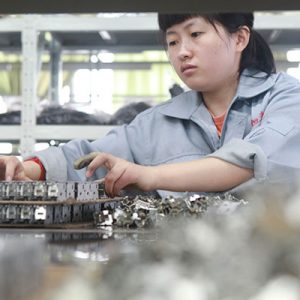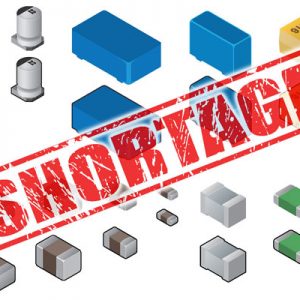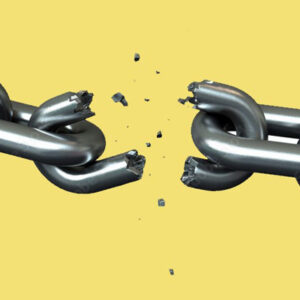Quick Contact Request
Please fill in information below and we will be in touch shortly.
White Papers
Why Not China? The Case for Domestic Reshoring
 As we enter a new political climate with expressed emphasis on rebuilding our military, extensive deregulation, and the return of manufacturing to the United States, increasing leading indicators support a potential massive reshoring effort in the near future. Quality Manufacturing Services remains positioned for immediate response with the capital support, technical infrastructure, and necessary expertise to handle any available opportunities.
As we enter a new political climate with expressed emphasis on rebuilding our military, extensive deregulation, and the return of manufacturing to the United States, increasing leading indicators support a potential massive reshoring effort in the near future. Quality Manufacturing Services remains positioned for immediate response with the capital support, technical infrastructure, and necessary expertise to handle any available opportunities.
While the Far East, Central, and South America have enjoyed economic trade advantages such as low labor costs, supply chain proximity, and other financial incentives, domestic electronic circuit board assembly manufacturing may soon meet or exceed ROI parity. “Why Not China” explores some of these recent developments and recognizes the potential increasing advantages of electronics manufacturing in our own backyard.
Built for Speed: The Future of Domestic Electronics Contract Manufacturing
 For decades, learning organization development and behavior was considered a competitive advantage. The exponentially increasing advancements in technology, communication, and globalization have forced competitive levels where leading indicator recognition, flexibility, and more organic structural responsiveness are necessary for competitive survival. Inventories are pushed to the lowest possible level, turn time expectation faster than ever, cost reduction focus remains prevalent, and multi-system approaches are consolidated into individual platforms.
For decades, learning organization development and behavior was considered a competitive advantage. The exponentially increasing advancements in technology, communication, and globalization have forced competitive levels where leading indicator recognition, flexibility, and more organic structural responsiveness are necessary for competitive survival. Inventories are pushed to the lowest possible level, turn time expectation faster than ever, cost reduction focus remains prevalent, and multi-system approaches are consolidated into individual platforms.
Even with these industry developments, EMS providers of the future must recognize and remain focused upon specific behaviors not only sustaining competitive edges but enable continuing performance excellence.
The Robots Are Coming! The Robots Are Coming!
 Rather than fear the robotic manufacturing assistance in the electronics industry, EMS providers should embrace the additional efficiency, repeatability, and provided competitive edge enhancement.
Rather than fear the robotic manufacturing assistance in the electronics industry, EMS providers should embrace the additional efficiency, repeatability, and provided competitive edge enhancement.
Even with this technological enhancement, EMS providers cannot lose sight of what will always remain the most profound competitive edge – strategic decisions based upon human instinct.
Risky Business – The Latest ISO9001 and EMS Value Enhancing Confrontation
 For any successful business, risk-based thinking is an essential, almost unconscious foundation of both long and short term decisions that may contribute or detract value.
For any successful business, risk-based thinking is an essential, almost unconscious foundation of both long and short term decisions that may contribute or detract value.
ISO9001:2015 now frames your quality management system as a critical component of overall business strategy where the risks most important to your continual improvement are codified and receive critical, decision making consideration. Don’t fear what you should or are already doing…
Avoiding the Counterfeit Trap: Electronic Component Counterfeits In An EMS Supply Chain
 You wouldn’t drive a car if the possibility existed of the steering wheel falling off, so why allow fraudulent electronic components to contaminate your supply chain? Not only is your organization’s reputation and existence put at risk, but the potential for catastrophic loss of life transcends into societal moral responsibility.
You wouldn’t drive a car if the possibility existed of the steering wheel falling off, so why allow fraudulent electronic components to contaminate your supply chain? Not only is your organization’s reputation and existence put at risk, but the potential for catastrophic loss of life transcends into societal moral responsibility.
Electronics counterfeiting has reached epidemic proportions and although some degree of advanced analysis techniques and capital will empower EMS providers with sufficient resources to detect and eliminate, a few basic, no-cost immediately available steps can increase your advantage in victim prevention.
The Multilayer Ceramic Capacitor (MLCC) Shortage Crisis
 Whether an original equipment manufacturer (OEM) or electronic manufacturing service (EMS), the industry impact of the current multilayer ceramic capacitor (MLCC) crisis is already affecting commitments and rapidly choking the supply chain. The shortage is expected to last, at a minimum, through 2020 and some experts predict considerably longer. Two essential factors are contributing to this Black Swan: primary capacitor manufacturers such as Murata and TDK, like any other business, recognize that with limited capacity, any output must provide the highest return on investment and second, the strengthened domestic economy is enabling cross market growth in almost all segments.
Whether an original equipment manufacturer (OEM) or electronic manufacturing service (EMS), the industry impact of the current multilayer ceramic capacitor (MLCC) crisis is already affecting commitments and rapidly choking the supply chain. The shortage is expected to last, at a minimum, through 2020 and some experts predict considerably longer. Two essential factors are contributing to this Black Swan: primary capacitor manufacturers such as Murata and TDK, like any other business, recognize that with limited capacity, any output must provide the highest return on investment and second, the strengthened domestic economy is enabling cross market growth in almost all segments.
Miniaturization and the Electronic Manufacturing Service
 EMS (Electronic Manufacturing Service) value is sustained by the capability to support electronic assembly population using increasingly complex layout densities and geometrically progressive miniaturizing component packages. And, in parallel, continue offering transparent quality levels, responsiveness, and investment return. With Moore’s Law recently decelerating and Dennard Scaling continuing a rigorous technical debate regarding size, cost, and power density constants (Woo, 2016), many smaller, less technically capable EMS providers will be driven into nonexistence resulting from an inability to meet these new technological manufacturing demands. MEMs (Microelectromechnical Systems), smart devices, sensor and tracking technologies, and the IOT (Internet of Things) continue steady market expansion and those EMS providers who cannot or will not adapt will be left fighting for diminishing, low margin legacy scraps. Peter Drucker (Trout, 2006) stated “A business has only two functions: marketing and innovation.” This innovation belongs to the nimble, responsive, and technically capable EMS who can manufacture at parity with the primary assembly driving market force – component and subsequent assembly miniaturization.
EMS (Electronic Manufacturing Service) value is sustained by the capability to support electronic assembly population using increasingly complex layout densities and geometrically progressive miniaturizing component packages. And, in parallel, continue offering transparent quality levels, responsiveness, and investment return. With Moore’s Law recently decelerating and Dennard Scaling continuing a rigorous technical debate regarding size, cost, and power density constants (Woo, 2016), many smaller, less technically capable EMS providers will be driven into nonexistence resulting from an inability to meet these new technological manufacturing demands. MEMs (Microelectromechnical Systems), smart devices, sensor and tracking technologies, and the IOT (Internet of Things) continue steady market expansion and those EMS providers who cannot or will not adapt will be left fighting for diminishing, low margin legacy scraps. Peter Drucker (Trout, 2006) stated “A business has only two functions: marketing and innovation.” This innovation belongs to the nimble, responsive, and technically capable EMS who can manufacture at parity with the primary assembly driving market force – component and subsequent assembly miniaturization.
COVID-19 Pandemic: The Past, Present, and Future
 Supply Chain Raw Material Shortages and Rare Earth Metal Constraints are Skyrocketing Electronic Manufacturing Component Lead Times and Costs
Supply Chain Raw Material Shortages and Rare Earth Metal Constraints are Skyrocketing Electronic Manufacturing Component Lead Times and Costs
During the transition period between initial awareness of COVID-19 and realization as a global pandemic, individual reactions varied from the virus as nothing more than a mild flu all the way to a second coming of the Bubonic plague. Fully more than a year after the initial spread, not a civilized person exists without the event’s influence on some personal level. After affecting the entire global economy, moderating restrictions, widespread vaccine administration, and other pandemic easing signals are welcome positive indicators. Even toilet paper’s brief stint as the new Gold Standard is now just an unpleasant memory. The COVID-19 worldwide shutdown will be felt for decades if not a generational overshadow highlighting supply chain fragility.
Supply Chain Strain: More Than Keeping Your Paddle in The Water

One of my family’s most enjoyable outdoor activities is whitewater rafting. If you know the sport and rafted at least once, “Keep your paddle in the water” is a familiar phrase. This well-intended instruction does not guarantee a corresponding result. When running whitewater, stability is not only achieved by keeping your paddle in the water but uniform strokes to maintain a faster, controlling speed than the surrounding current. Today’s supply chain crisis places raw material suppliers, OEMs, EMS providers, and customers all in the same raft. Do you know what happens if you don’t keep a firm grasp on the handle of your paddle? You may accidentally knock the teeth out of those around you.
Domestic Electronic Sovereignty and the Future

Instability resulting from numerous recent events such as the COVID pandemic supply chain disruption, invasion of Ukraine, and domestic inflation, have generated an anxiety of uncertainty for the future across many industries. No one disputes the interconnectedness of the global economy.
But, past or current arrangements do not discount the need for technological preservation safeguards. It is in the world’s best interests to ensure Western Civilization continuity. Any forward thinking, value preservation company has an established, well-developed Disaster Response and Business Continuity Plan.

